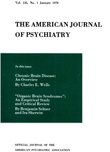PLAY AND NEUROSES OF CHILDREN
Abstract
The neuroses, mainly child neuroses, are caused by a deficiency of the normal group play, in order to fill the unbearable "emptiness" of the ennui. The neurosis, then, is not a genuine organic disease, but a psychogenic or "acted one." In short the neurosis is a primitive compulsion play, which replaces the missing free group play. The treatment of the child neurosis consists of 3 stages:
1. We must make clear to the child ( in the language of his age) and to the educator the dynamic connection between the symptoms and the empirically established play deficiency, in order to eliminate the inhibitory and misleading disease consciousness (liberation moment).
2. Next we have to organize systematically the life of the child according to his individual play urge, in order to get rid of the sickening play deficiency ("scheduling the day" moment).
3. Having effected the cure, it is necessary to supervise the child for some time by means of periodic checkups, in order to prevent possible relapse which might result from "residual play sensitiveness" ("weaning" moment).
Access content
To read the fulltext, please use one of the options below to sign in or purchase access.- Personal login
- Institutional Login
- Sign in via OpenAthens
- Register for access
-
Please login/register if you wish to pair your device and check access availability.
Not a subscriber?
PsychiatryOnline subscription options offer access to the DSM-5 library, books, journals, CME, and patient resources. This all-in-one virtual library provides psychiatrists and mental health professionals with key resources for diagnosis, treatment, research, and professional development.
Need more help? PsychiatryOnline Customer Service may be reached by emailing [email protected] or by calling 800-368-5777 (in the U.S.) or 703-907-7322 (outside the U.S.).



